Elizabeth Gilbert wrote in her memoir “Eat, Pray, Love”: “Those who come to Bali will find their true love”. And she did find her true love in Bali. For me, on this beautiful island, I also found a passionate love, but in a different meaning.
[rpi]
THE LAND OF ARTS
From Vietnam, after two flights (transit at Kuala Lumpur, Malaysia), I finally arrived at the most famous destination of “the Land of a thousand islands” Indonesia – Bali. When arriving at the airport, all my fatigue vanished as I was feeling so overwhelmed. Bali airport was extremely clean, spacious, and the path from the immigration area to the main gate of the airport was decorated with elaborate motifs, murals, and masks that bore Bali’s cultural features. Visitors would recognize that the place they just arrived at was nowhere else but Indonesia, Bali. These identities are the pride of the Balinese people, and what they want to show off to visitors around the world is: Bali is a land of arts.
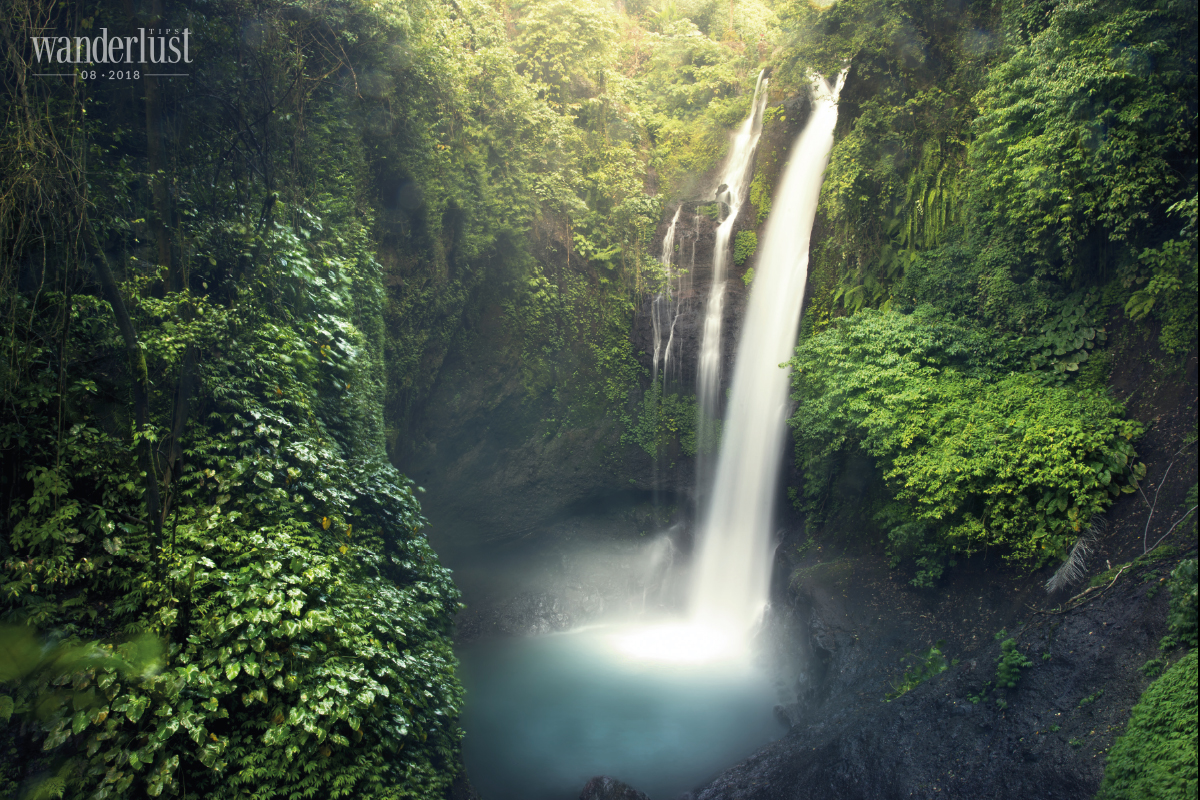
Balinese people are considered the most talented of the 300 ethnic groups in Indonesia. Thus, they combined the Hindu religious culture with their unique polytheism, which became the inspiration for people to develop many brilliant forms of art. In addition, during those days travelling all over Bali, I often thought that if people here did not do business in tourism and concentrate on artworks, they might become talented artists. You can see it through the impressive temple architecture they built like the mysterious Gates of Heaven with its beautiful split gates, the fascinating dances, or countless handicrafts.
Until now, I still remember Jalan Raya Andong in Ubud when visiting the Tegallalang Rice Terraces. I like to call it The Road of Arts as there are various shops selling handicrafts on this long road. Each store usually sells one kind of product such as sculptures, clothing, decorations made of shell, and ceramics. And it is interesting that the products of nearly 100 stores are almost all different. That is the creativity which brings unique style to each store here.
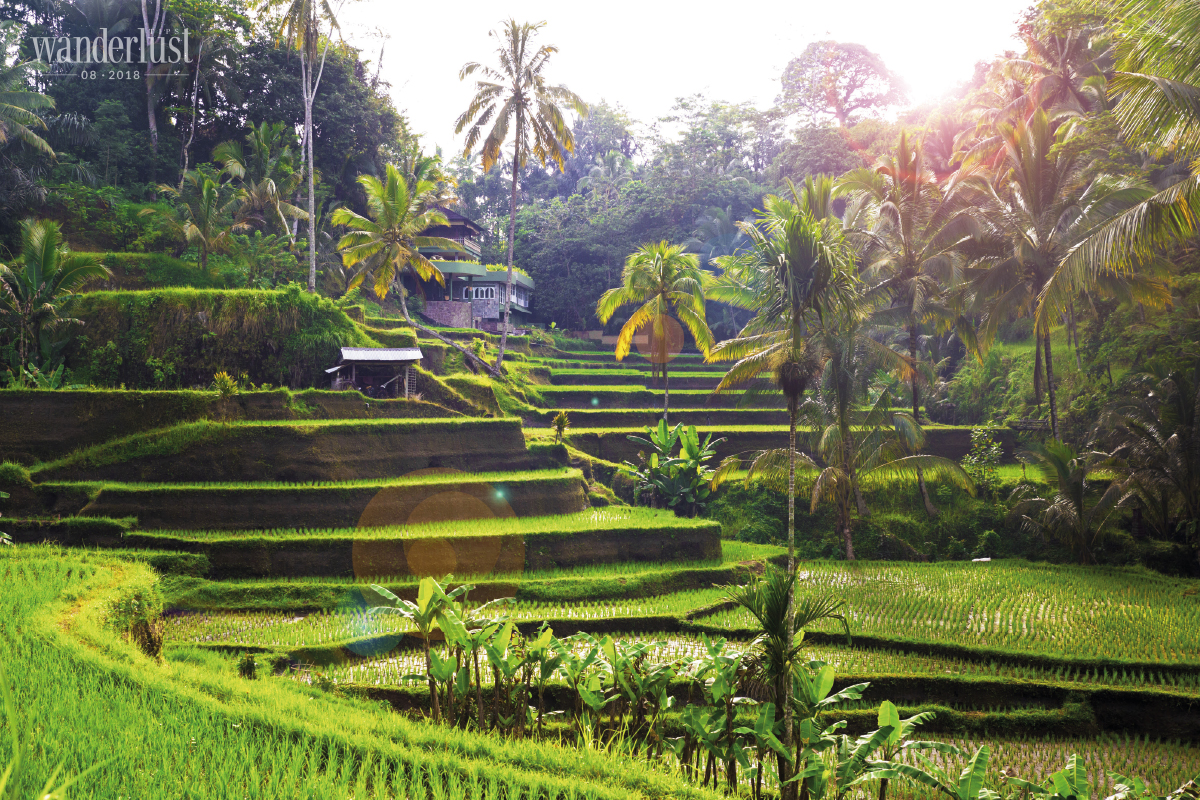
I was fascinated to admire countless colourful handicrafts. Miraculously-made hammocks were hung all over a store. Meanwhile, another shop sold dreamcatchers made in a variety of weaving styles and some other sacred items such as certain feathers. A few feet away, a shop sold terrarium (a sealable glass container containing soil and plants) displayed on large trunks, and each terrarium was a wonderful blue world. If you love to buy furniture, you might get over-excited when wandering on this road of art. There are sets of tables and chairs, wooden shelves in a variety of styles, from simple modern to vintage classic style, painted in a different range of colours including single light colours and many garish colours. Moreover, in the mirror store, you should not miss the chance to admire the elaborate metal trim around mirrors of all shapes and sizes, which will turn any customer’s room into a little corner of a fairy tale.
Besides the Jalan Raya Andong, a must-see place with many souvenir shops for visitors to Bali is the Ubud Art Market. This traditional market is always crowded with stalls selling all kinds of goods: clothes, shoes, bags, sarongs, and paintings. Walking through narrow streets, the sweet invitation of the owners and the finely crafted items almost made me forget about the time and my limited budget.
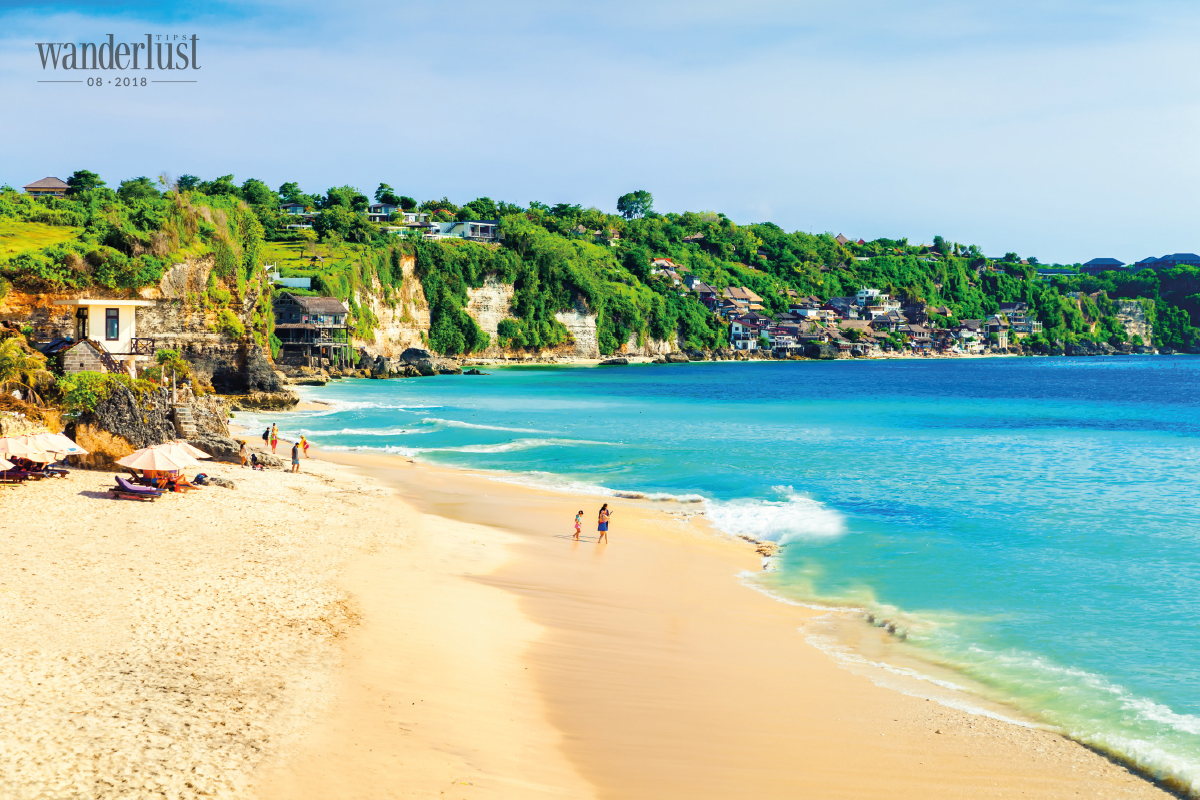
THOUSANDS TEMPLES BUILT AROUND THE ISLAND
Bali has thousands of temples. It is estimated that Bali has about 11,000 temples, and if shrines in the houses of residents are counted, the number is probably up to 200,000 temples. There are 2 main types of temples found in Bali: public temples and family temples. Public temples were built in massive scale and fabulous architecture with the contribution of the community, and they are used as a place of worship. Meanwhile, family ones are the place to worship ancestors, being kept and developed through many generations.
Through the architecture of the temples (the area, the number of temples and towers, and sculpture details), we are able to guess the prosperity of the family. I drove through the beautiful streets; there were many family temples in all styles and scales from large to small ones. If you pay close attention, you will see that on many roads, people do not place numbers on their houses but in the temples of the family located next to their house.
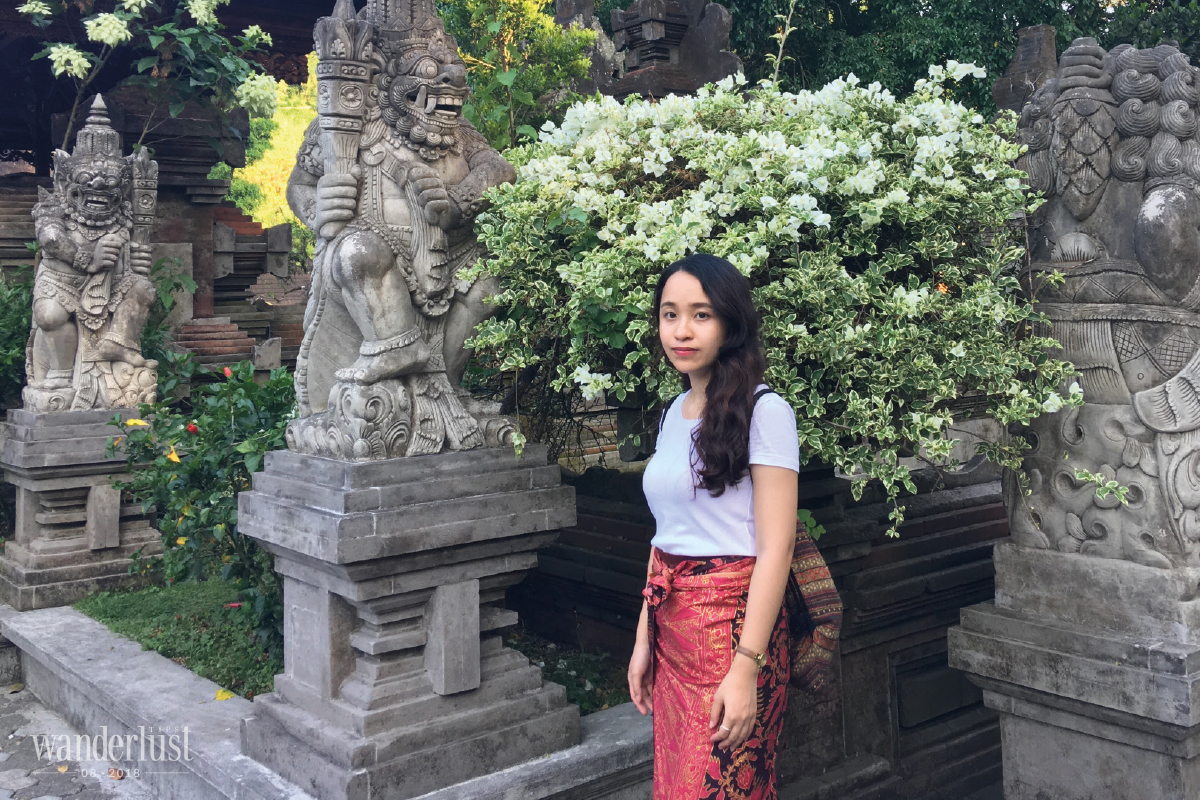
The vast majority of Bali population follow Hinduism, so the architecture of the temples here is strongly influenced by this religion. The temples were often built in a familiar structure, including three parts to represent the ‘three worlds’: the underworld, the human realm, and the heavens. At the central area of the temple, there are usually three high towers worshiping Hinduism’s three prominent deities: Brahma, Vishnu, and Shiva. The Shiva temple is located in the middle; the temples of two other gods are on either side, symbolizing the circle of creation, maintenance, and destruction.
The most important, largest, and holiest temple of Hindu religion in Bali is the Pura Besakih. Back on the volcano Mount Agung, the Pura Besakih is surrounded by beautiful nature, majestic mountains, and green rice fields. Wearing a sarong made of traditional Indonesian batik, I followed the pilgrims to climb up the steps leading to the temple.
Approximately 30 works of gates and towers appeared impressive, featuring a harmonious combination with the surrounding landscape. In 1963, when the volcanic eruption killed 1,700 people, the lava flowed to the Pura Besakih, but then stopped only meters away from it. People believe that it was a miracle and the sign of the gods.
The next day, I spent time visiting the Tirta Empul Temple in Tampaksiring, a town in central Bali. The temple was built in the 10th century, surrounded by a stream. Water from the stream flows into a sacred pond, and from that, the water continues to flow into two large rectangular pools through preciously engraved fountains in the temple.
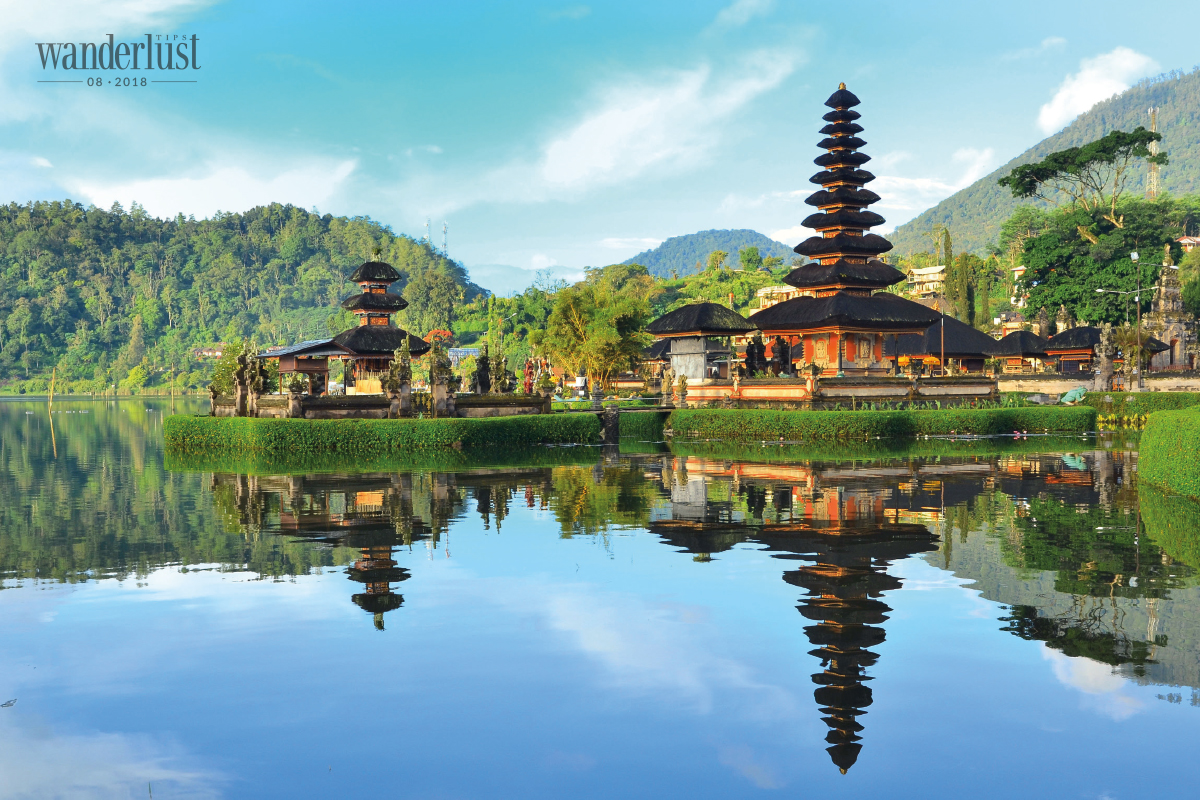
Though the Tirta Empul Temple is not as large as the Pura Besakih, it attracts tourists to the special traditional ceremony of the Balinese people. They step into the water, move through each fountain to cleanse, purify themselves, and pray for goodwill. Soaking in the cold and crystal water, my mind suddenly became clearer than ever, my whole body was relieved and purified.
Because I did not have enough time to visit all of the temples in Bali, the third temple I chose was the Tanah Lot Temple, which played a very important role in the spiritual life of the Balinese. The temple is where the Balinese people show their loyalty to the sea god, Baruna. The people here also believe that the poisonous snakes dwelling in crevices around the rock are to protect this sacred place from evil spirits. Built by a Javanese Buddhist monk, Tanah Lot Temple resides on top of a giant rock mass, surrounded by deep blue sea. Interestingly, at high tide, waves flood the causeways, separating the rocks and the island. At low tide, you may cross the path hidden in the water to get closer to the temple. After wandering around every corner of the temple and taking pictures, I decided to rest at the nearby green grassland where there were many trees decorated with patterns made of colorful threads. Sitting under the tree, looking at each beam of sunlight shining through the leaves, the red, purple, yellow, blue bands of threads swaying in the wind, and admiring blue waves splashing the shore, I enjoyed the peaceful atmosphere. Had this time stopped for a moment, I would have stayed in Bali a bit longer.
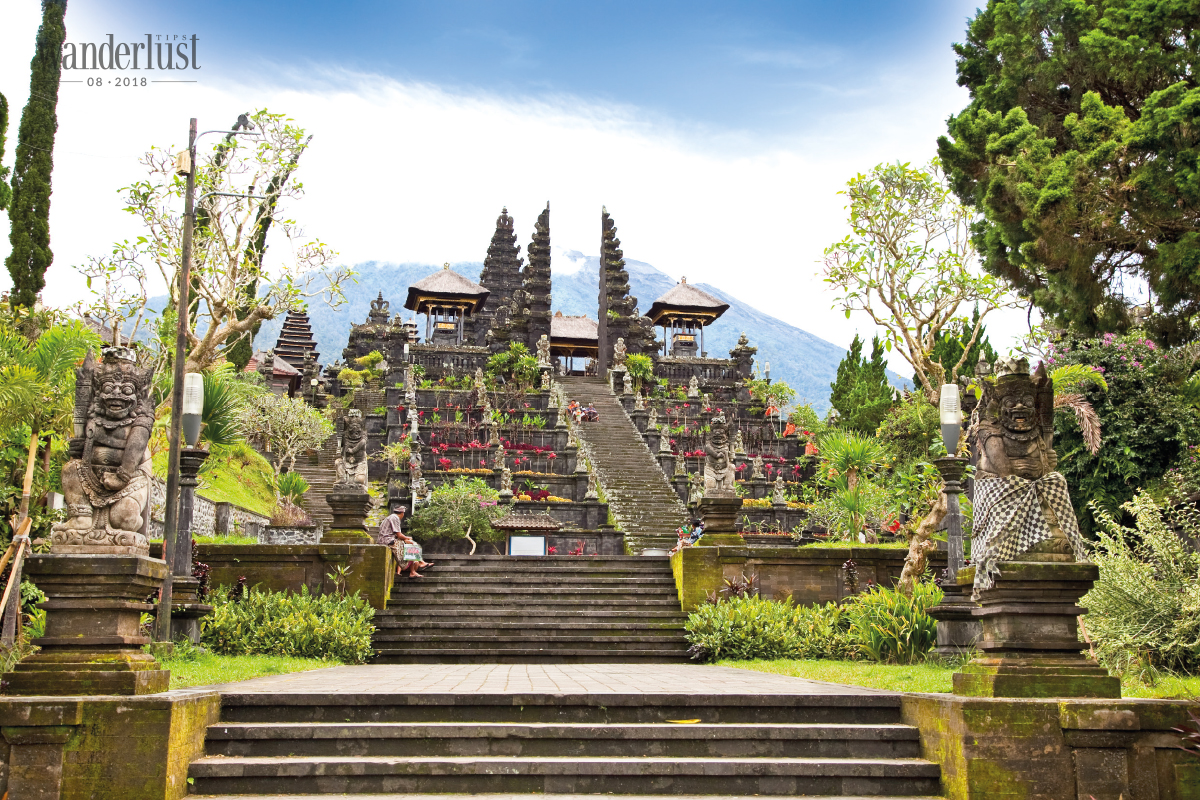
FABULOUS NATURAL SCENERY
If the beautiful temples or flourishing arts are all that this island has, Bali will not be that famous. Another reason that makes people fall in love with Bali is its beautiful nature. Bali has dreamlike beaches, majestic volcanic mountains, waterfalls, and green rice terraces. Although each of these features is not the most beautiful in the world, when they are put together on this island, it creates a special impression for visitors.
In the hot sunshine of the afternoon, not even minding that my skin would be burned, I ran on the stretching sandy beach, straight to the sparkling water. Diving under the clear blue water, I could see the colorful coral reef and school of small fish swimming around. Meanwhile, my friend chose another way to enjoy the moment, which was to order a cocktail and then lie on the beach, feeling the refreshing atmosphere of the sea. The tourism services in Bali are very well-developed so if you love sports activities, you can participate in many sports such as windsurfing and scuba diving. Each experience brings a different excitement.
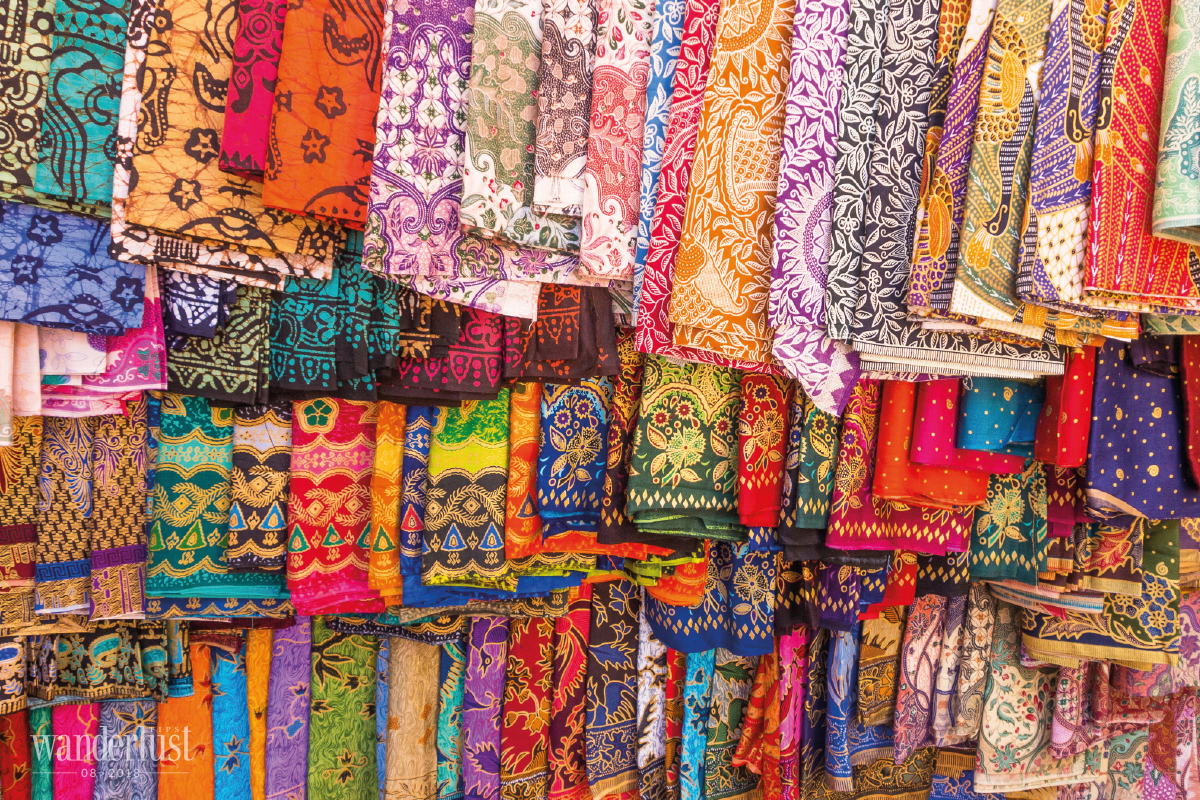
As mentioned above, in addition to the romantic beach experience, Bali also has an abundance of natural attractions like the famous Tegallalang Rice Terraces. If in other places, people can only stand still to admire the fields; in Bali, I could enjoy the view in a completely unique way – on a swing. I still remember the feeling of surprise when the first swing brought me up high reaching the blue sky. However, after overcoming the fear, I felt like I was flying over the rice fields and the branches of coconut trees. Above my head, the white clouds were drifting, while the golden sunshine was dancing along the swing.
Or you can enjoy the anxiousness and extreme excitement when falling down the Aling Aling waterfall. Here, a faint-hearted girl like me dared to close my eyes and dropped myself at a height of 10 metres to the strong currents. Feeling like you are falling from a high building, all the scenes slips before your eyes until the body sinks into the cold water. Then with the help of staff, I was taken from the foot of the fall to the shore. Looking back at the high waterfall with white foaming water, I felt my heart still beating constantly and my limbs weaken, but a sense of happiness and joyfulness rose in my heart when I just overcame one of my fears.
After you try a lot of exciting activities to explore nature during the day and get exhausted, it is recommended to go to the bar for relaxation. You can choose the most beautiful location in the railing area to fully enjoy the sunset in beautiful Bali, with the bright red sun disappearing under the sparkling sea surface. Alternatively, you can also admire the sunset on the spectacular volcano. Whatever the scene was, the sunset in Bali was fascinating. I continued to immerse myself in the beautiful moment until the last beam of sunset completely disappeared, leaving many beautiful and sweet aftertastes for my last moments in Bali.
Embracing my love for Bali back to Vietnam, sometimes I still remember this island of sacred temples, natural wonders and talented people. You should make time to visit Bali at least once to fall deeply in love, as I have dropped a part of my heart in Bali.
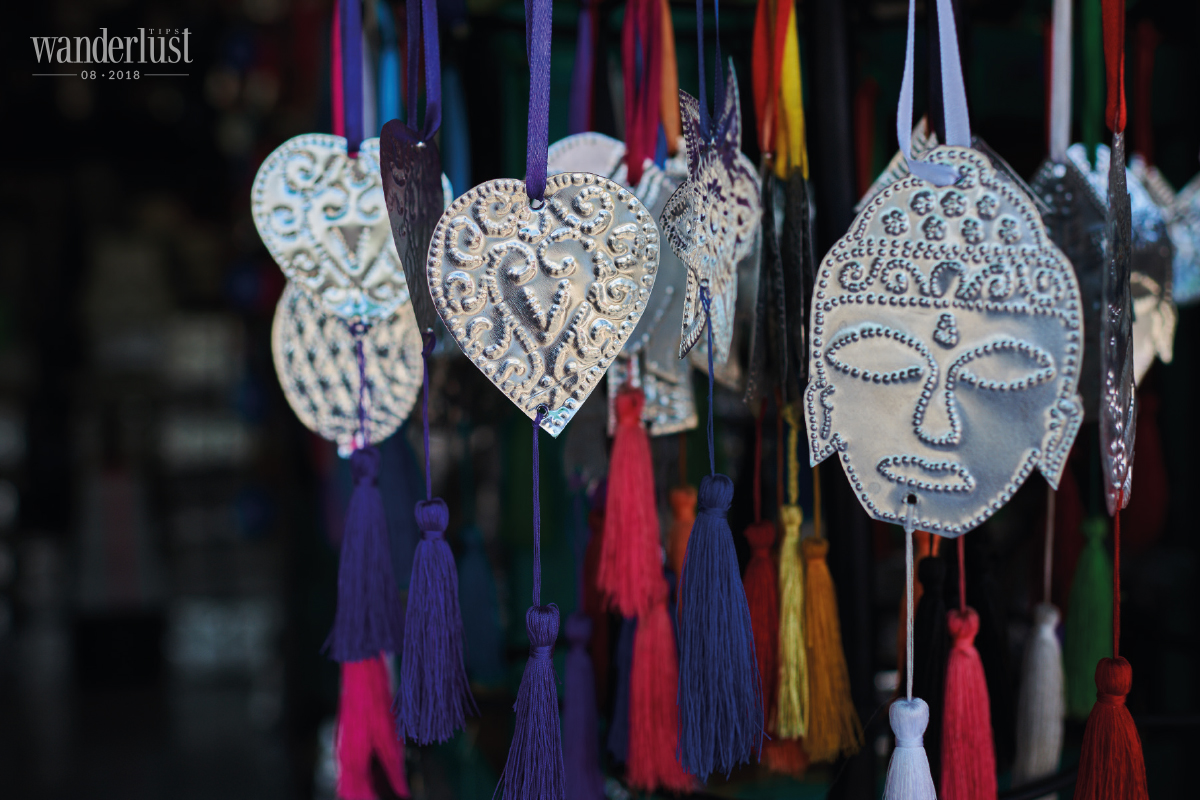
W. TIPS FOR BALI
How to get to Bali
From Vietnam, there is no direct flight to Bali, so you will have to take transit flights. The three major airlines that provide flights to Bali are Vietnam Airlines (transit in Jakarta, Indonesia), Tiger Air (transit in Singapore), and Air Asia (transit in Kuala Lumpur). You should look for promotion programs and book flights early to get the best price.
Best time to visit
The best time to visit Bali is in Autumn, from May to October, when the weather is cool and dry with no heavy rains. However, in July, August, and September, Bali is very crowded with visitors and rooms are generally fully booked, congestion may happen, while the cost of living, eating, and visiting attractions increase greatly. Therefore, you should avoid these 3 months and go in May, June, and November.
Accommodation
Bali is a famous destination with various hotels with beautiful architecture and unique views. Prices vary to suit the needs of different ranges of visitors. However, nice cheap hotels are not always available, so it is recommended to book a hotel about two months in advance, especially if you plan to go in peak season.
Language
Indonesians speak English quite well, so you can communicate with them in English when greeting, shopping, asking for directions, or asking about food, transportation, and time.
Currency
Like many other areas in Indonesia, Bali residents use Rupiah with a rate of IDR1 = VND1.59 (it may change depending on the time). You should exchange at the airport or banks to get the best price.
Transportation in Bali
Motorbike is a convenient transportation to travel in Bali as it is very cheap and suitable for visitors to explore the island by themselves. However, note that people here drive in the left lane instead of right lane as in Vietnam. When renting a motorbike, you also need to check your gas tank and helmet. Downtown, traffic jams often happen, especially in the evening.
Shopping
In Bali, there are different prices for local people and tourists. Especially in markets, people often say double or even triple, quadruple the original price. If you are smart, you can bargain. You can even bargain with services that seem to have fixed prices such as hotels or tours.
Clothing
Many temples require visitors to wear a Sarong; it is a long tube of fabric, often wrapped around the waist down to the feet. You can buy Sarongs at the markets with a wide variety of options, or rent it at the temples. Sarongs are made of batik, traditional Indonesian fabric rich in patterns and colours, and is popular among tourists.
Cuisine
There are many delicious dishes in Bali that you should try such as nasi goreng, sate lilt, babi guiling, lawar, betutu, to name a few.
Wanderlust Tips

